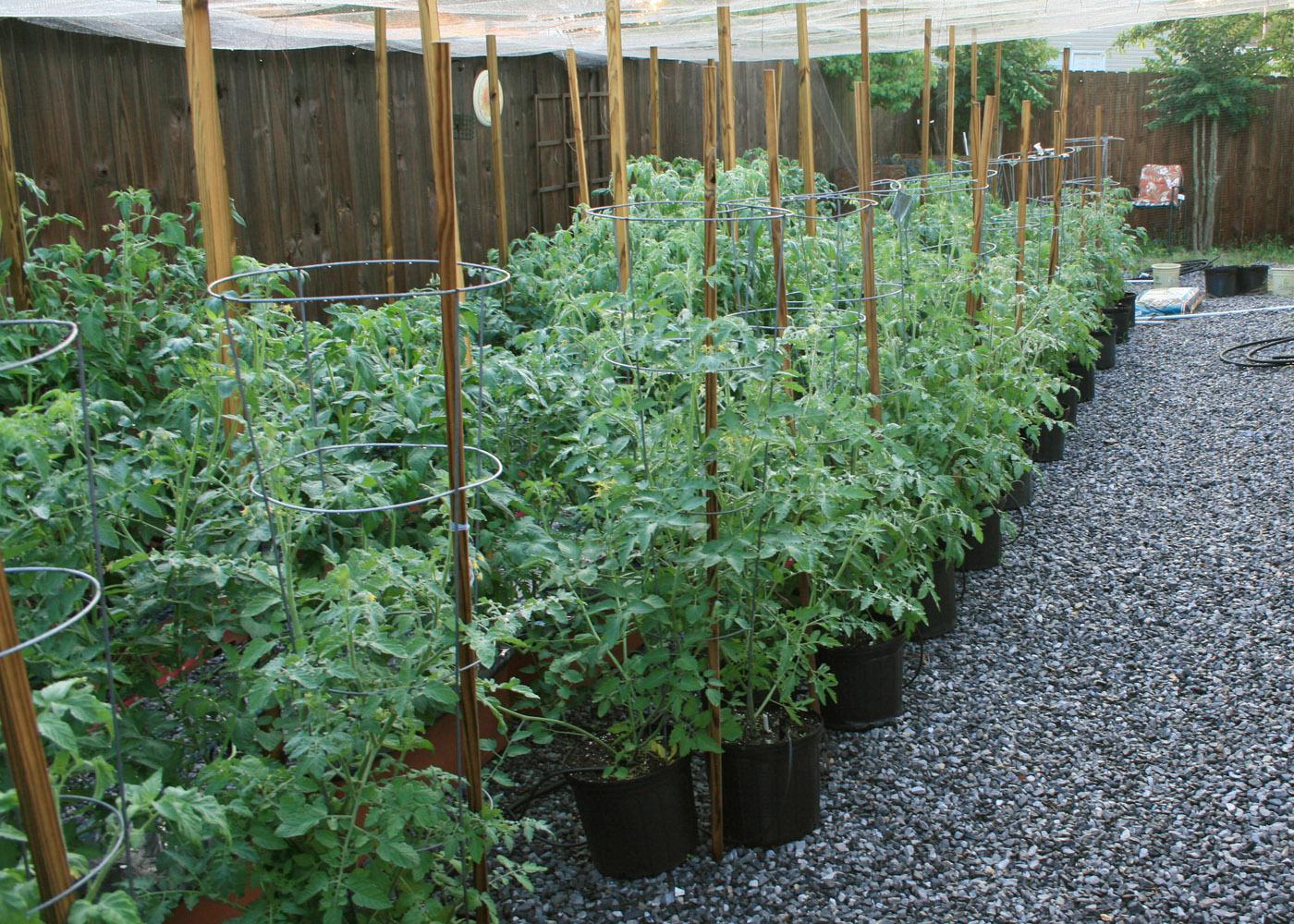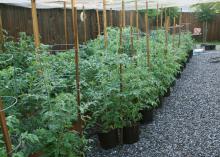Information Possibly Outdated
The information presented on this page was originally released on April 26, 2011. It may not be outdated, but please search our site for more current information. If you plan to quote or reference this information in a publication, please check with the Extension specialist or author before proceeding.
Try containers for fresh-grown produce
Containers aren’t just for flowers; they can be used to grow fresh vegetables for aspiring gardeners who don’t have a traditional garden.
Container gardening isn’t just for flowers (top). Many vegetables can be grown in containers, such as these tomatoes in 3-gallon nursery containers.
A container is a great way to grow fresh produce in a small space. These mini bok choy (bottom) are thriving in window boxes. (Photos by Gary Bachman)
Container gardening is ideal for those with limited yard space or those living in apartments with only a balcony. Many locations in Mississippi, especially along the coast, have soil that is less than ideal for vegetables. Growing them in containers is a great alternative to amending the soil.
Growing vegetables in containers also can elevate the garden so those with accessibility challenges can enjoy gardening, too.
The ideal container for growing vegetables is limited only by your imagination. Many people use the black containers that other plants come in from the nursery. These vary in size from smaller than a quart to larger than 15 gallons.
Different vegetables need different-sized containers. For example, tomatoes and eggplant perform well in 3- and 5-gallon containers, peppers grow well in 3-gallon pots, and zucchini and squash succeed in 5-gallon containers.
Terra cotta pots are great for herbs and are attractive wherever they are placed. Window boxes are a little deeper and are good for growing small head lettuce, mini bok choy, spinach and radishes.
Plastic tubs ranging in size from 12 to 25 gallons are good selections for root vegetables, such as potatoes, beets, onions and carrots. Remember that these tubs will last only a couple of seasons because sunlight breaks down the plastic. You can paint the exposed surfaces to extend their lifespan, but be sure to use paint designed to stick to plastic.
Self-watering containers are available at local garden centers or from online gardening supply websites. These are especially good for patios and balconies, as they produce less water overflow than traditional containers do. Be sure to check weight limits; this type of container can weigh more than 60 pounds when full of water.
Moisture is the most crucial consideration when growing vegetables in containers. Without their roots in the ground, the plants are completely dependent on you for water. You can’t rely on rainfall. Most container-grown vegetable must be watered daily or even several times a day in the summer.
Container growing lends itself to drip irrigation. Off-the-shelf starter kits are available along with additional components to expand the irrigation system.
Never use native soil when growing vegetables in containers. Instead, use commercially available potting media or mixes composed of peat moss, bark and forest byproducts.
You must maintain an adequate level of fertilization to yield an optimum harvest. Both organic and inorganic options are available, and the horticulture industry offers more fertilizer choices every season.
Controlled-release fertilizers release their nutrients over a period of time, typically from three to nine months or more. Water-soluble fertilizer should be applied weekly with a watering can or a hose-end applicator. You get superior results when you use both a controlled-release fertilizer in the soil and weekly doses of water-soluble fertilizer.
If you want your own farm-fresh vegetables but don’t have the space for your own farm, try growing them in containers this year.









